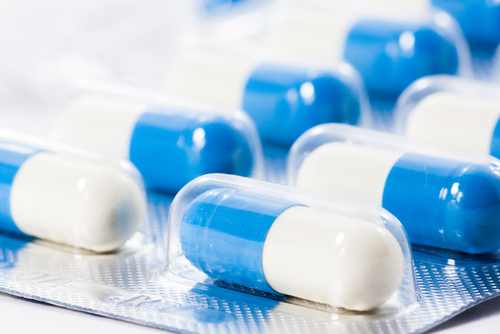A new study is suggesting that repeated use of certain antibiotics may increase the risk of developing type-2 diabetes. Researchers analyzed data from one million people living in the United Kingdom and learned that those individuals who were given at least two doses of four specific kinds of antibiotics were far more likely to develop type-2 diabetes.
Penicillins
Penicillins are used to treat infections caused by bacteria. The medicine is developed from a specific fungi called Penicillium fungi and is commonly used to treat bacterial infections such as tonsillitis and ear infections. They are used to prevent infections in those with weakened immune systems due to existing illnesses or conditions such as sickle cell disease. Penicillins are also prescribed for those people whose immune systems may need a little help because they are undergoing certain treatments that can leave them vulnerable to infection.
Cephalosporins
Cephalisporins are the biggest and most diverse group of beta-lactam antibiotics which are structurally and pharmacologically-related to penicillins, and are used in uncomplicated skin and soft-tissue infections, urinary tract infections, streptococcal pharyngitis, and surgical prophylaxis.
Fluoroquinolones
Fluoroquinolones are broad-spectrum antibiotics that are critical in fighting serious bacterial infections, particularly the ones acquired in a hospital setting such as pneumonia, urinary catheter infections, pyelonephritis and bacterial prostatitis.
Macrolides
Antibiotic macrolides are commonly used to treat respiratory tract and soft-tissue infections. The antimicrobial spectrum of macrolides is a bit broader than that of penicillin, and because of this, macrolides are a common substitute for patients with a penicillin allergy.
The Study’s Findings
The study, which was published in the European Journal of Endocrinology, found that the risk of developing type-2 diabetes rose with the number of antibiotics prescribed. For instance, two to five courses of penicillin increased the risk by 8%, while more than five courses increased the risk by 23%.
Even more significantly, two to five courses of quinolones increased the risk of developing the disease by 15% and more than five courses increased the risk by a stunning 37%. These findings were determined after researchers adjusted for other diabetes risk factors such as smoking, obesity and heart disease.
“While our study does not show cause and effect, we think changing levels and diversity of gut bacteria could explain the link between antibiotics and diabetes risk,” study senior author Dr. Yu-Xiao Yang, of the University of Pennsylvania, said in a journal news release.
What’s Your Gut Got to Do with It?
Lead author of the study, Dr. Ben Boursi, points to a surprising area of the body to blame for the increase in type-2 diabetes, “gut bacteria have been suggested to influence the mechanisms behind obesity, insulin resistance [a precursor to diabetes] and diabetes in both animal and human models. Previous studies have shown that antibiotics can alter the digestive ecosystem.”
Other medical experts, like Dr. Gerald Bernstein, director of diabetes management at The Friedman Diabetes Institute, part of Mount Sinai Beth Israel Hospital in New York City, agree that the findings are intriguing and warrant further study.
“It has been recognized for some time that bacteria in one part of the body can contribute to inflammation in another.” As is the case in the connection between gingivitis — a bacterial infection of the mouth — and heart disease. So, the link between alterations in bacteria of the GI tract and diabetes are not far-fetched, Bernstein admits.
“This paper strengthened a potential hypothesis and we all have to wait and see what comes next,” he said.
For his part, Boursi added that “overprescription of antibiotics is already a problem around the world as bacteria become increasingly resistant to their effects. Our findings are important, not only for understanding how diabetes may develop, but as a warning to reduce unnecessary antibiotic treatments that might do more harm than good.”
It seems a new study comes out every day describing things in our daily lives and environments that can cause or exacerbate type-2 diabetes. But wouldn’t it be nice to hear about a 100% natural protocol that could completely reverse the cause of your diabetes?
One medical expert says this is not only possible, but that patients can do it without needing to take any potentially harmful medications.
Sound too good to be true?
In the free video on the very next page, she shares the details of this diabetes-reversing method and how you can learn a few simple tweaks to what you eat and how you move that can engineer a metabolic reboot so you can maintain healthy blood sugar levels for the rest of your life.
She even shares one specific step you can try immediately to help you get control of your diabetes today.
If you’d like to learn the strategies and tools to fix your blood sugar system without relying on drugs watch the video now.
 Validating...
Validating... 






Leave a Reply